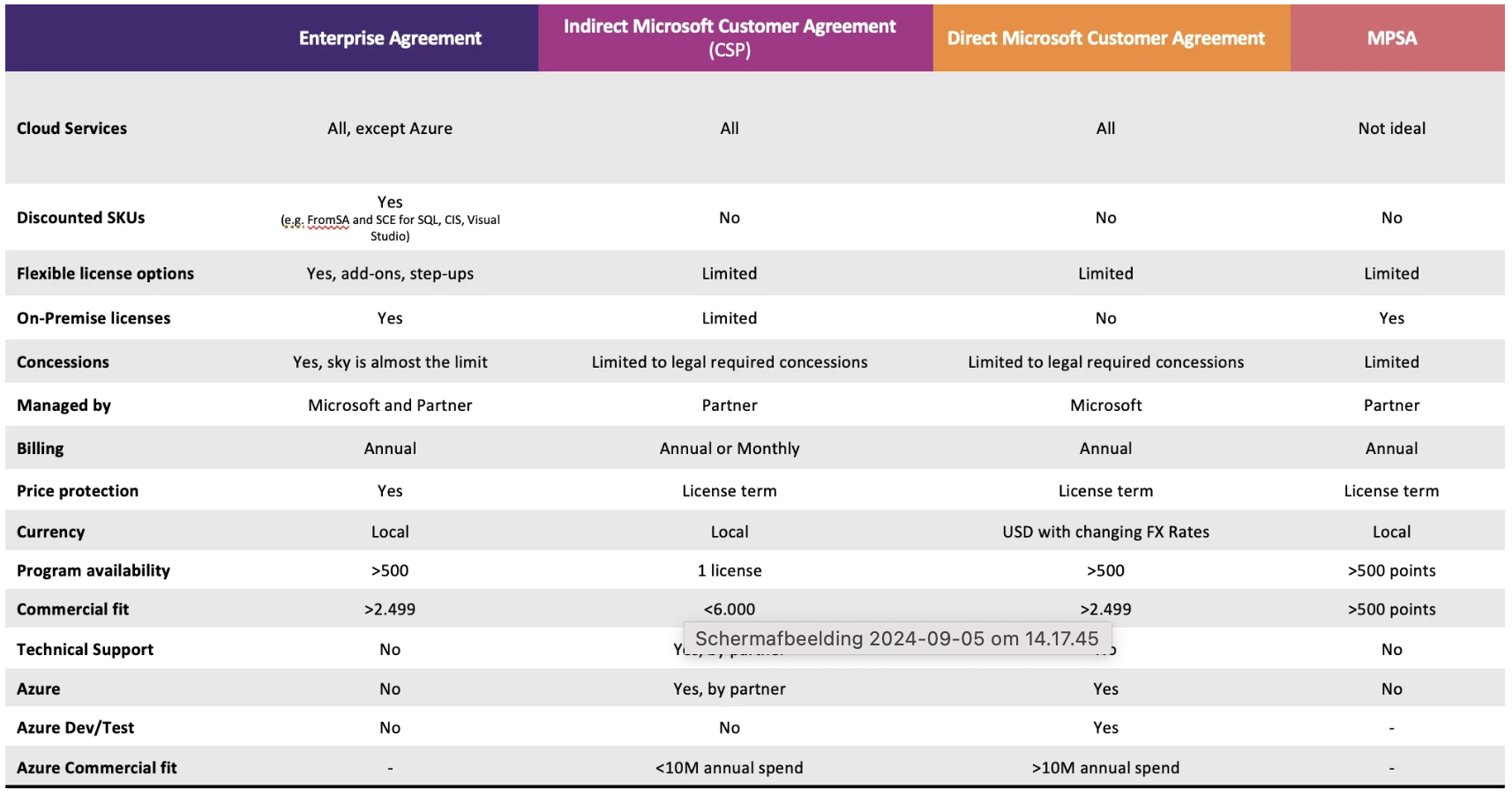Which Microsoft contact is best for you? CSP vs EA?
This is a question that a lot of organizations ponder when thinking about buying Microsoft products and services.
Let’s help you by comparing CSP vs EA in detail.
Cloud Solution Provider (CSP), or more officially said NCE and Enterprise Agreement (EA) are both very popular and provide unique benefits tailored to different business needs.
Initially, CSP targeted specific audiences, but today, it often provides a more cost-effective option than EA. However, there’s a BIG catch: as CSP has evolved, its complexity has increased, and not every offering fits every scenario.
Take the M365 E3 bundle, for instance.
If you’re currently licensed under an EA and find more favorable terms in CSP, you can’t simply switch over. This is because certain products, like Teams, are no longer included for new customers under CSP, and Microsoft will consider you a new customer in that case. This exemplifies the added complexity, and in this scenario, you would be better off renewing your EA, which includes Teams, via the existing customer SKU.
The Cloud Solution Provider (CPS) program allows Microsoft partners to sell cloud services, including Azure, Microsoft 365, and Dynamics 365, to customers.
CSP is, therefore an indirect contract model where partners have a standardized purchase price and incentive model from Microsoft and will define their own selling price.
Microsoft’s vision with CSP is that this program is a 100% partner-led model.
Therefore, the Microsoft partner must deliver technical support for the subscriptions being bought. At launch, this was an ideal contract for small and medium-sized businesses (SMBs) and organizations.
Today, organizations with up to 2,400 users can benefit from this program, including enterprise customers who don’t get extra discounts on certain products like Co-Pilot and Dynamics 365.
CSP has certain pros that make it a standout program for many organizations:
The Microsoft Cloud Solution Provider contract is not without its flaws:
EA is Microsoft’s volume licensing program designed for larger enterprises with 500+ users or devices.
It provides a more structured and discounted pricing model in exchange for a multi-year commitment.
EAs are more suitable for enterprise organizations that benefit from a price lock during contract terms and can negotiate favorable terms.
EA licensing contracts offer several benefits to enterprises:
However, the EA is not without its flaws and may not be suitable for all organizations. Some potential drawbacks include:

Now that you better understand the differences between CSP and EA licensing models, you may wonder which is the right choice for your organization.
Let’s make it easy for you:
Both the CSP and EA programs offer substantial benefits depending on your organization’s size, cloud adoption strategy, and financial structure.
CSP is ideal for smaller businesses, test environments, and some products, while EA suits larger enterprises with the scale and resources to benefit from a long-term commitment and centralized management.
Choosing between CSP and EA can significantly impact your organization’s flexibility, cost structure, and access to Microsoft products. Whether you’re a smaller business looking for scalability or a large enterprise seeking predictable pricing, understanding these models is essential.
At 2Data, we specialize in guiding businesses through complex licensing decisions, ensuring you select the best-fit option for your needs. Don’t let the intricacies of CSP and EA slow you down—our experts are ready to assist you.
Contact us and let’s strategize your next move!